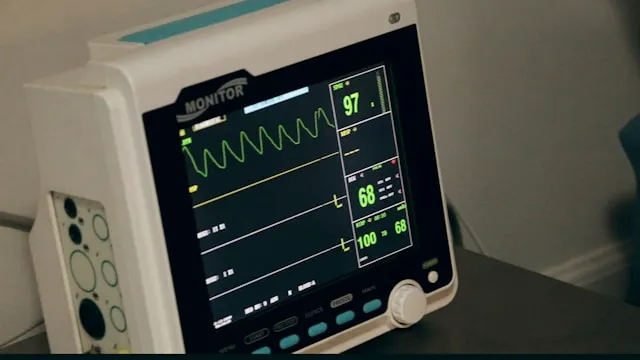What is CT angiography?
A computed tomography (CT) angiogram is an imaging test to view arteries that supply blood to your heart muscles. CT angiography differs from traditional coronary angiogram as it does not use a catheter to screen blood vessels, but relies on an X-ray to provide images of your heart and heart blood vessels. In that regard, CT angiography combines a traditional CT scan with intravenous (IV) injection of a special dye to produce cross-sectional images of the area under observation. The dye illuminates the heart's blood vessels and tissues.
Why do you need CT angiography?
A coronary CT angiogram is employed to study various heart conditions, but is most commonly used to screen for coronary heart disease, especially if you are at a moderate risk of the disease.
The test is less invasive than traditional angiogram as it does not require a catheter to be inserted in your groin. X-ray images with the help of the dye show any blockages in your heart's arteries.
Which specialist should you consult if you have any of the signs and symptoms?
Make an appointment with a cardiologist if feel you are experiencing symptoms related to heart disease. Your doctor will ask you questions related to how long you have been experiencing the symptoms, their frequency and severity, and family history of heart disease, diabetes or blood pressure, to understand your condition and schedule a CT angiogram to screen your heart.
What are the screening tests and investigations before the surgery?
CT angiography by itself is a screening test for heart disease but your doctor will take into consideration some factors to determine if you are suited for the procedure. Allergies to the contrasting dye are not uncommon, and you will be asked about any known case or history of allergic reactions you may have had. You will be given medication to reduce the risk of allergic reaction in such a scenario. Your doctor will need to know if you are pregnant, have kidney trouble, severe diabetes or weight issues. Your vital signs will checked before the procedure.
What is the procedure for CT angiography?
You may undergo a CT angiogram as an outpatient in the radiology department of a hospital. You will be given a medication (beta blocker) to slow down your heart rate. This will allow your doctor to view your heart more clearly during the scan. A numbing medication will be applied in your arm or hand before injecting the dye intravenously. Total time taken for the scan is less than 15 minutes, but the beta blocker administered to slow down your heart rate before the actual process can begin requires about an hour to take effect.
Next, a technician will place some electrodes on your chest to record heart rate. You will lie on a long examining table that slides through a large machine with a tunnel (CT scanner). Though you will not be able to see it, an X-ray tube will capture images of your heart while moving rapidly around your chest. You may be asked by the technician to hold your breath for few seconds at a time. The technician operates the machine from an adjacent room separated from you by glass. An intercom allows communication between you and him/her.
What are the known complications of the procedure?
Due to the usage of X-rays for taking images, you will be exposed to small amount of radiation during the test. For this reason, you should not undergo CT angiogram if you are pregnant. Some people also develop allergic reaction to the contrast material in the dye used. Discuss your concerns with your doctor before going ahead with the angiogram.
What precautions or steps are necessary to stay healthy and happy before and after CT angiography?
You will be asked to not eat anything for four to eight hours before the procedure.
Avoid caffeinated drinks before the test as they can speed up your heart rate and impede in obtaining clear images of your heart. Inform your doctor if you have any history of allergic reactions.
In case you experience any pain at the time of injection of contrast dye, inform your radiologist. The CT scanner is a large machine with an examining table that passes in and out of it. Inform your doctor if you feel nervous in tight, closed spaces so that you may be given a sedative to help you relax.
Also, read about Can Chest Pain be a Sign of a Heart Attack?What are the dietary and physical activity requirements before and after CT angiography?
You can drive yourself to the venue of the test, and will be able to drive back too (unless you are administered a sedative during the procedure). If you are breastfeeding, wait for up to 24 hours after the test before nursing.
If your doctor identifies blockages in your heart vessels, take action by making some lifestyle changes like exercising regularly, eating healthy foods, and quitting smoking (a major risk factor for heart disease).
Sources: "CT Angiogram," Mayoclinic.com, Mayo Clinic Staff, https://www.mayoclinic.com/health/ct-angiogram/my00670 "Computed Tomography Angiography (CTA)," John Hopkins Medicine, https://www.hopkinsmedicine.org/healthlibrary/test_procedures/cardiovascular/computed_tomography_angiography_cta_135,15/ "Computed Tomography Angiogram (CT Angiogram)," WebMD.com, https://www.webmd.com/a-to-z-guides/computed-tomography-angiogram-ct-angiogram
Reviewed by







